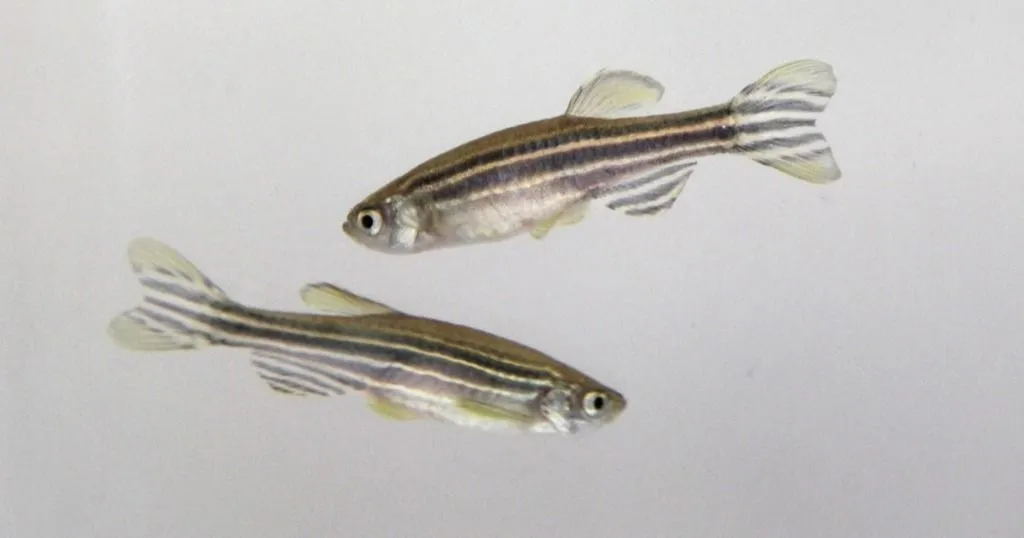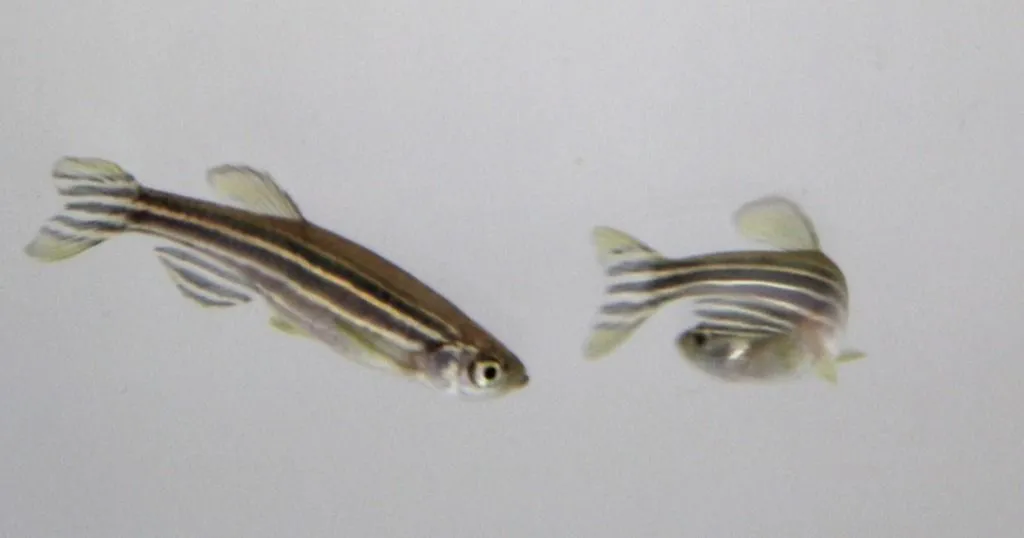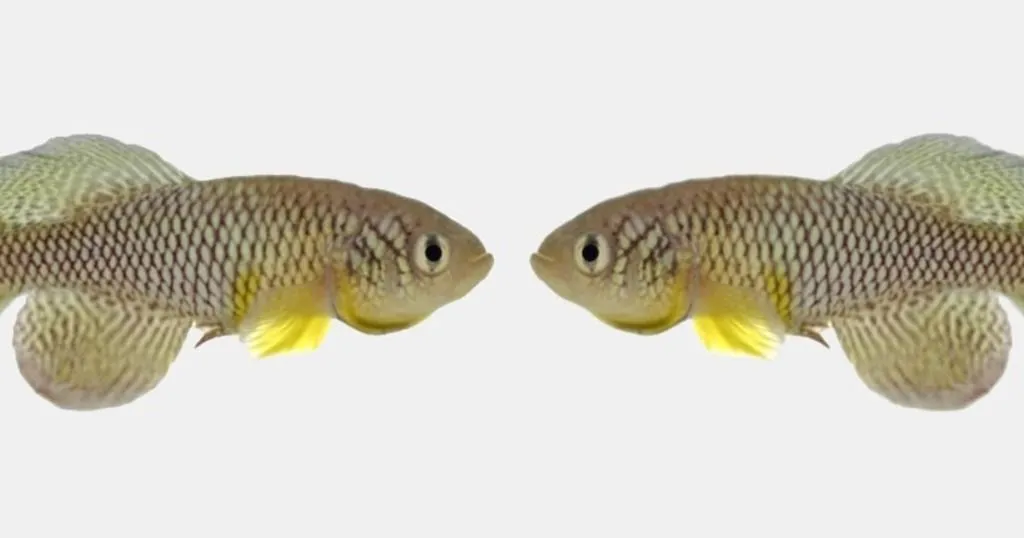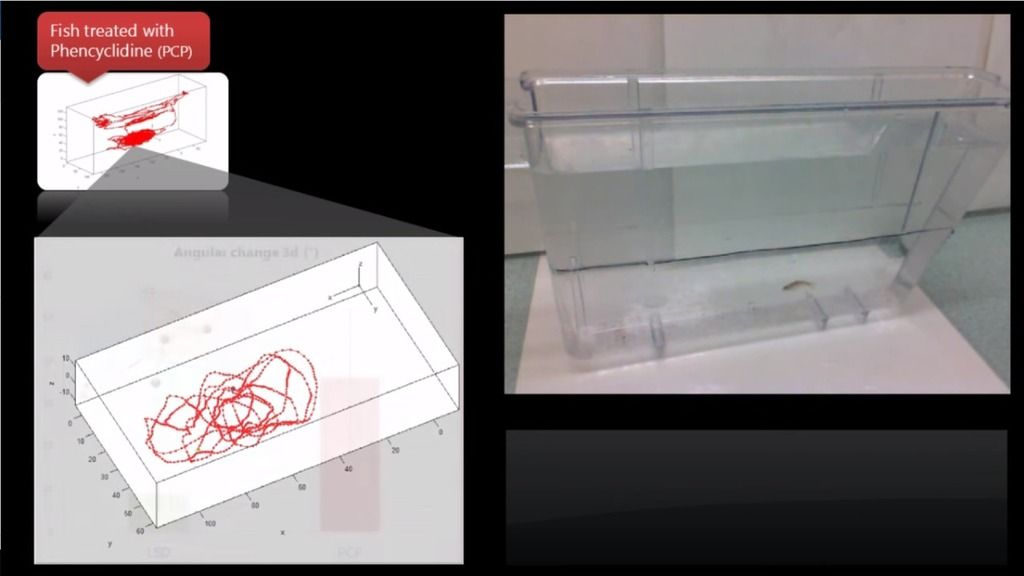5 must-read articles on zebrafish behavioral research
I have been reading a lot about zebrafish research lately and I thought it would be nice to share some of my favorite articles with you.
Posted by
Published on
Tue 16 Oct. 2012
Topics
| Cognition | Danio Rerio | EthoVision XT | Learning And Memory | Novel Tank Test | Video Tracking | Zebrafish |

I have been reading a lot about zebrafish research lately and I thought it would be nice to share some of my favorite articles with you.
Think I missed one? Please let me know what your favorite zebrafish article is by commenting below!
(Scroll down for a video on zebrafish video tracking!)
Unmarked tracking of shoaling
This brand new article was submitted for Neuroscience 2012, which is being held right now, even as I am posting this blog.
Green and his colleagues investigated the effect of group-size, LSD, MDMA, and alarm pheromone in the shoaling paradigm. I like this article because they compared the (traditional) manual method of measuring inter-fish distances with automated video tracking.
For this experiment they used EthoVision XT in combination with the Social Interaction Module, and they did not mark the zebrafish.
Shoal density
They found that pairs of fish stays closer together than larger groups, and between the larger groups, no differences were found in shoal density.
They also found the optimal group size for robust behavioral data: 4 fish. This was the group size they used to confirm the sensitivity of the automated method to modulations that are known to decrease shoaling (LSD and MDMA) and increase shoaling (alarm pheromone).
Correlations between manual and automatic testing were high, and this experiment also showed some added value over manual scoring, such as the ability to add duration of proximity as a useful parameter.
Anxiogenic and anxiolytic manipulations
I also really liked the publication from Cachat et al. published in 2011. In this paper, they describe their attempts at 3D phenotyping in zebrafish.
They used EthoVision XT video tracking software to track zebrafish from both a side and top view, and combined this data to a 3D track. That, in itself, is a good excuse to go and read this article.
(By the way, if you are interested in 3D tracking, check this out.)
Anxiogenics and anxiolytics
Another reason to like this article is that it gives such a nice overview of the effects of several anxiogenic and anxiolytic manipulations on zebrafish in the novel tank paradigm.
It shows the strong anxiogenic effects of using alarm pheromone and repeated morphine withdrawal. To a certain extent, using a leopard instead of wild type zebrafish strain, or exposure to caffeine, also gave these effects.
The article also shows the strong anxiolytic effects of chronic exposure to fluoxetine (commonly known under the trade name of Prozac), ethanol (alcohol), nicotine, and to a lesser extent that of chronic morphine (strong painkiller).
Depth preference with surface and substrate cues
Rather than just looking at depth preference from a bottom dwelling point-of-view, Blaser and Goldsteinholm took the original route of differentiating between surface and substrate cues.
Zebrafish were tested in a split-level tank the authors call “a modified visual cliff apparatus”. Basically, the two sides of the aquarium could be adjusted in both substrate and surface level. Surface level was adjusted by moving the transparent ground glass plate up or down in the aquarium, while the substrate below the ground plate could also be moved away from the ground plate.
Preference for the deep
Blaser and Goldsteinholm found a clear preferences for greater surface depth, and a less pronounced preference for greater substrate depth (the deeper looking side).
I thought it was interesting to read that is looks like zebrafish dive down to get distance from the surface rather than getting close to the substrate level on the floor.
Responses to computer animated fish
Saverino and Gerlai published a paper in 2008 that definitely makes it to my list of all-time favorites.
They did quite an elaborate study in which they investigated what actually makes a zebrafish attracted to their shoal mates (and what does not). Rather than using all kinds or different fish, they used a computer screen to project Photo-shopped shoals on. Talk about thinking outside the box!
What's on TV
Test subject were tested in shoals themselves, and had to choose between a normal shoal on one side, and an alternative shoal on the other.
Turns out, zebrafish don’t dislike red colored zebrafish, but they prefer normal colored ones. However, when given the choice between wild-type and yellow colored zebrafish, they actually liked the yellow colored ones better! (Authors point out that this might be caused by the fact that vividly colored zebrafish, as they participate in courtship, exhibit more yellow coloration.)
Striping does not seem to matter to zebrafish in this study. They showed no clear preference between wild-type and otherwise striped (vertical stripes or no stripes at all) fish.
Body shape does seem to matter. While a fat, short looking zebrafish did not elicit preference nor avoidance compared to the wild-type, the stretched, elongated looking one did. Zebrafish strongly avoided this image, which might be explained by the fact that it looks like a predator.
To read more about this and the other experiments that were done in this study, read Saverino, C.; Gerlai, R. (2008). The social zebrafish: Behavioral responses to conspecific, heterospecific, and computer animated fish. Behavioural Brain Research, 191(1), 77-87.
Modified open field testing
The last paper I want to mention today is the one from Champagne and colleagues. I like it because it represents a straight-forward translation from open field testing in rodents, but with a twist.
They designed an open field test that was divided into 16 virtual squares. The 16 squares of the open field were divided in outer zones (12 squares) and inner zones (4). So far it is similar to the open field test we know well from rodent studies, where they often measure thigmotaxis.
The twist
But this is the twist: they combined this inner/outer preferences with an extra dimension by making one wall transparent (giving the illusion of an escape route), and the others opaque, effectively dividing the outer zone into a light zone (4 squares) and darker zone (8 squares).
They took two groups of fish, one that was stressed by net handling and one control group. They tested fish individually and tracked them from a top view, using video tracking software.
Both groups spent more time in the outer zone than in the inner zone, and this preference was more profound in the control group. Both groups also prefer the transparent zone to the opaque zone; again this was more pronounced in the control group.
These results suggest that the natural inclination is to engage in thigmotaxis and to find a way out (go into the lighter zone) was attenuated in the stressed group. The acute stress might momentarily relieve anxiety in zebrafish.
Let us know!
If you have any suggestions to add to my list of favorite zebrafish articles, please let me know in the comments below!
Read more about zebrafish research in these blog posts.
Related Posts

How to measure complex exploratory behavior in larval zebrafish

Fish live longer and are more active after eating “young poo”


